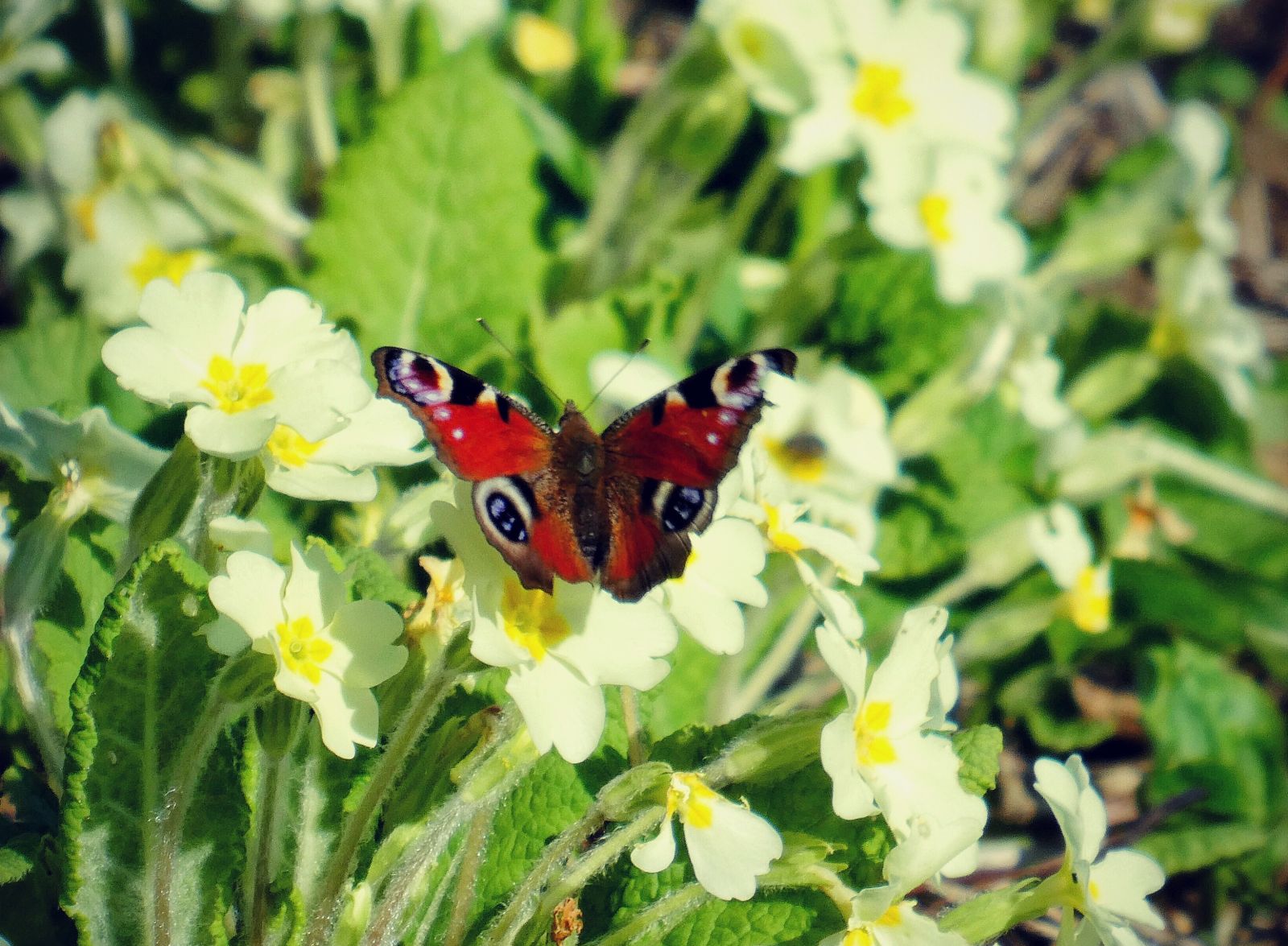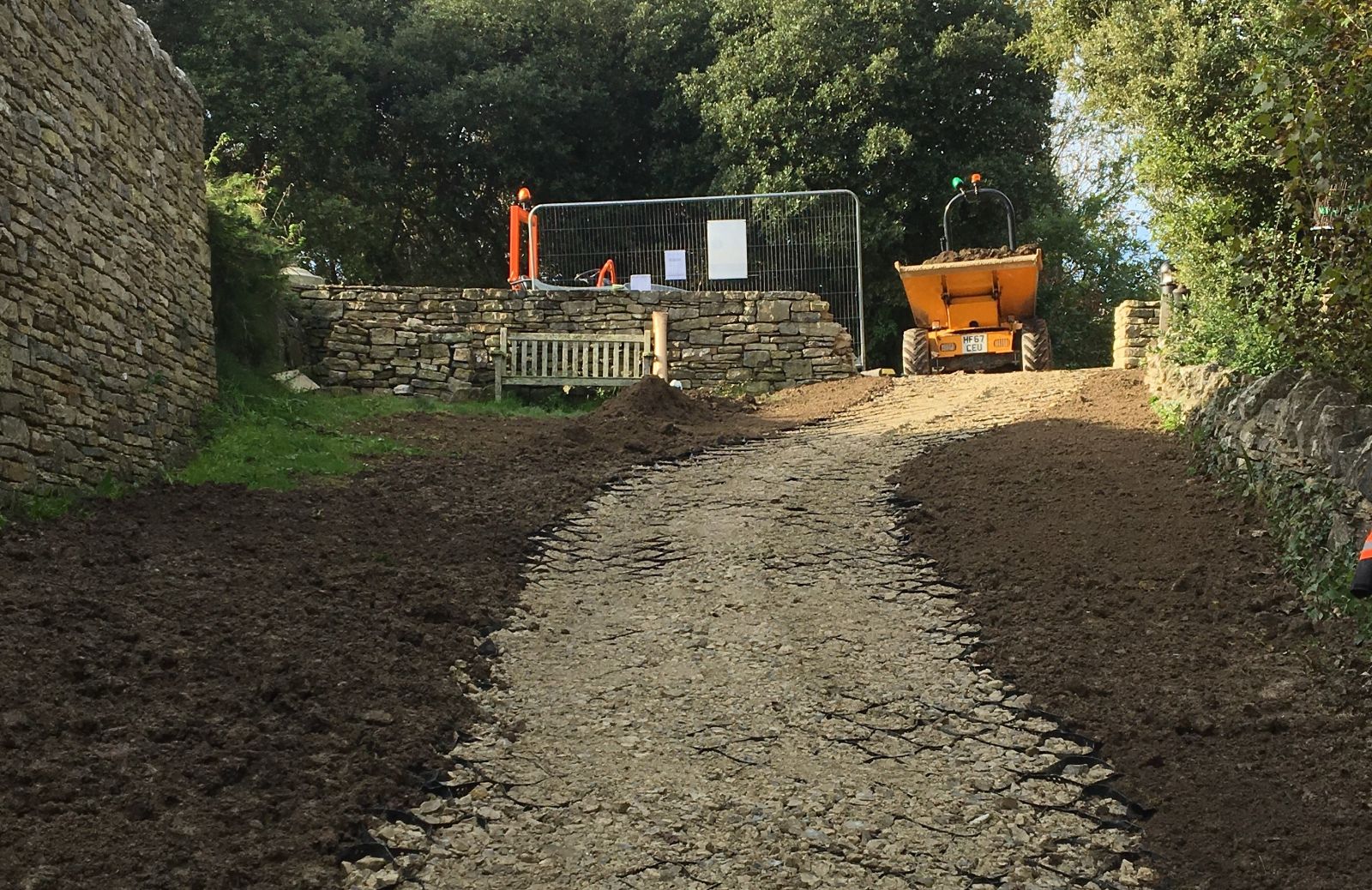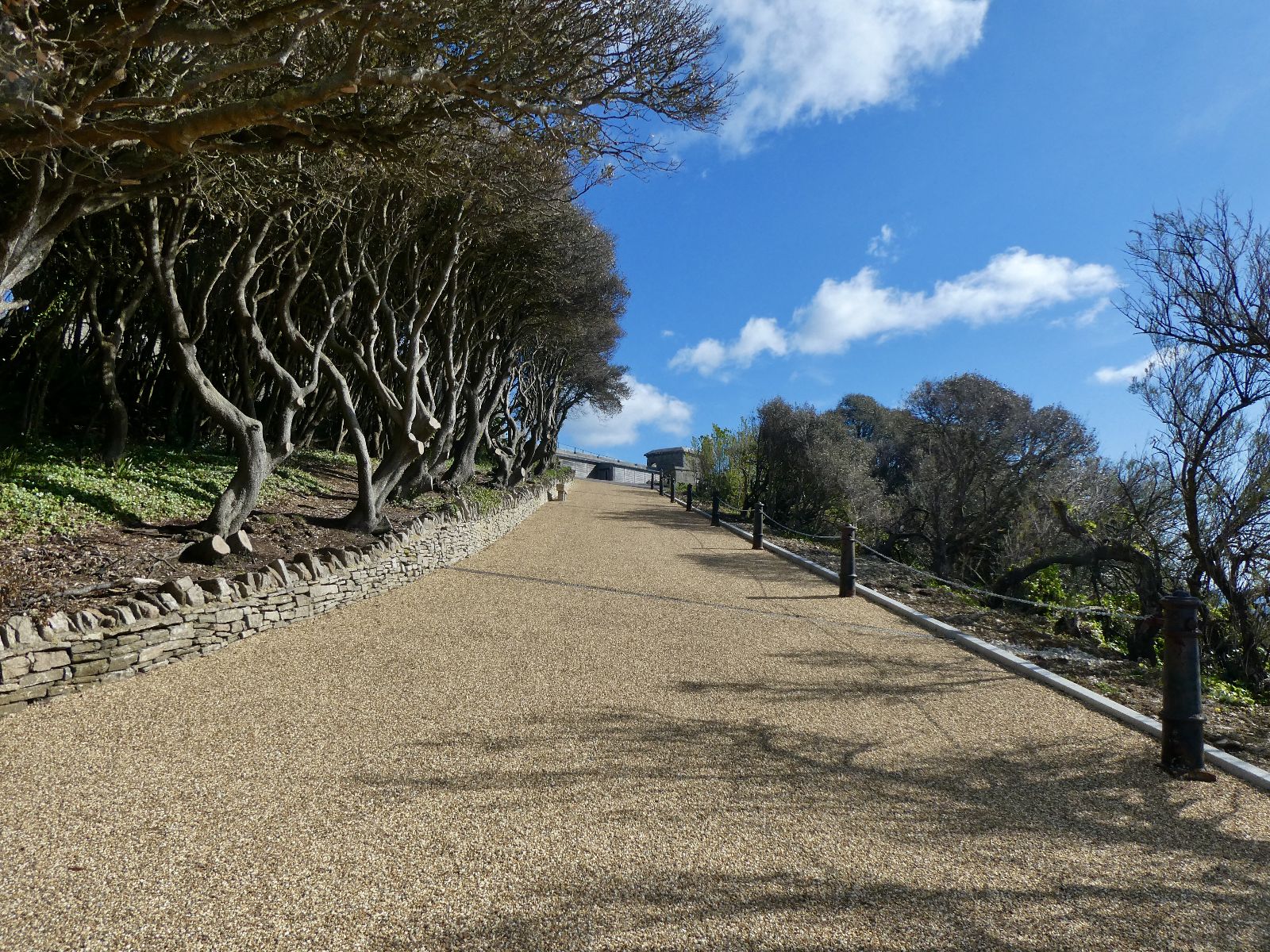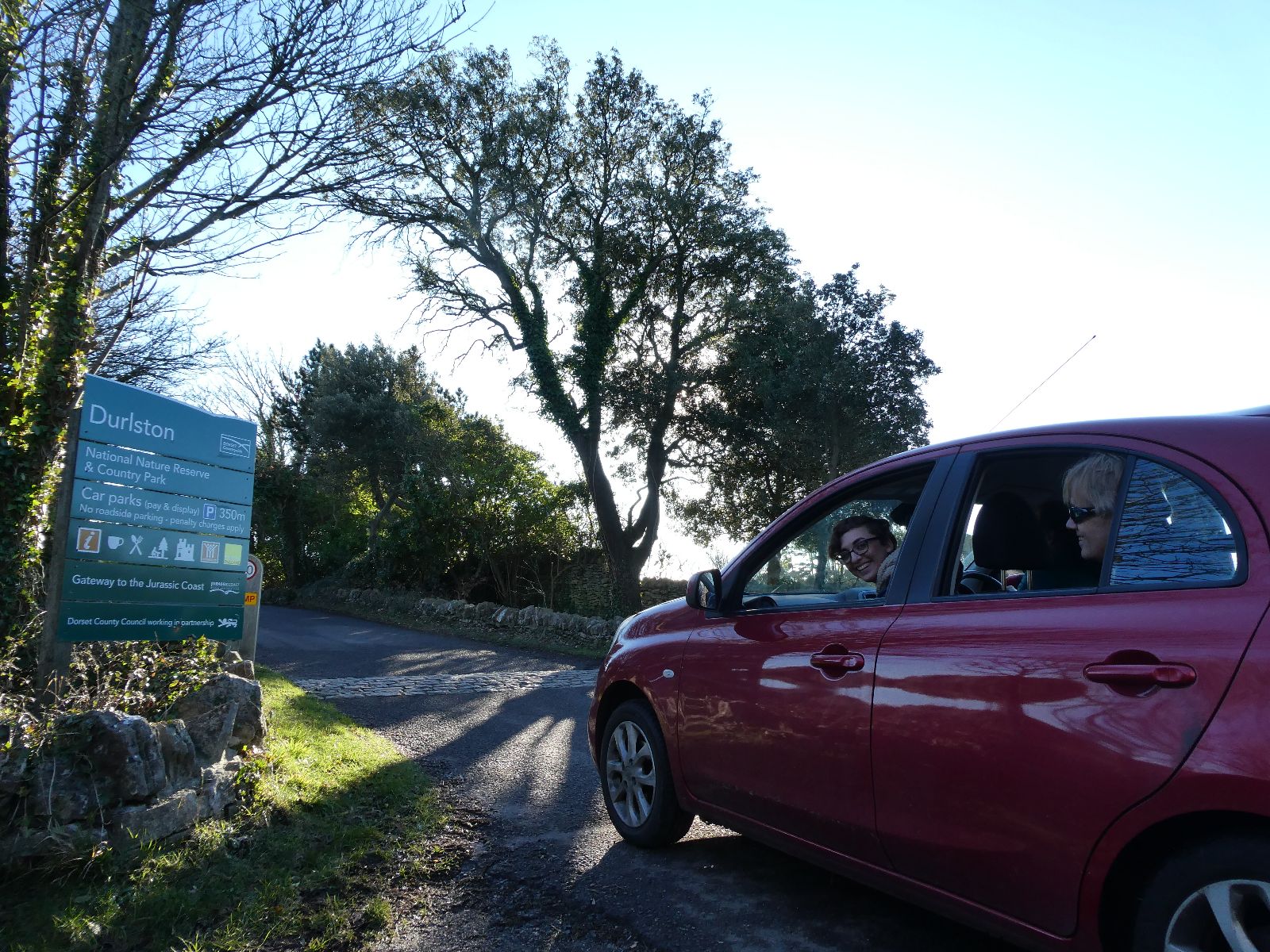Enhancing Habitat

It's been well over a century since George Burt purchased this landscape described as 'rough pasture and treeless downland', and his subsequent plantings have grew into a lovely woodland. However, over the years it has become dominated by invasive Sycamores and non-native Holm Oaks. The Holm Oaks are evergreen, blocking sunlight from reaching the ground and leaving a barren understorey, whilst the Sycamores spread rapidly like a weed, filling any gaps before other species get a chance. The woodland needed some proper habitat work to increase the biodiversity and improve it's ecological value as a habitat for wildlife.
The woodland at Durlston is protected under a Tree Preservation Order, so we applied to the planning authority to carry out to cut small proportion of the trees (literally tree by tree and branch by branch!) and were successfully granted permission for the works. Throughout the duration of the project we have also been carrying a number of wildlife surveys to monitor how our work influences a variety of indicator species.

The work we have been doing has concentrated on thinning the sycamore and holm oak to allow more light in, encouraging the growth of an understory scrub like bramble, spindle, blackthorn, and holly, which all provide food for birds and cover for small mammals and rodents. Spring flowers such as Bluebells, Primroses, and Celandines are then also able to thrive, providing an early source of nectar for pollinating insects. New glades and rides will allow regeneration of our native trees such as hawthorn, horse chestnut, English oak, and crab apple. Some of our more older and unique heritage trees have also under-gone 'crown-lifting' where the lower branches of the tree are cut back, removal of these older branches will improve the health of the tree so they can be enjoyed for many more years to come. Log piles and standing deadwood have been left as a home for detritivores, fungi, and roosting bats. Whilst leftover timber and woodchip are being used to create a new kids wild play trail and sell logs to support the funding of the project.
Wild Play

For many people, a passion for wildlife and conservation starts in their childhood. So in this later part of project we will be focusing on play and establishing new ways to engage children with nature and inspire our next generation of rangers and conservationists. One project we are currently working on involves producing a new series of activity cards which can be played around the park. Each card has a unique challenge; from telling a story, learning to identify leaves, going on a scavenger hunt, or building your own mini dry-stone wall.
This summer we will also be installing a new wild play trail through part of the woodland. The trail will follow a woodchip path between five separate glade play areas. Each play area is different, some are more active; with logs to balance on, a tree swing, or low ropes to climb. Other areas will be more sensory where children can listen to the sound tree or get their hands mucky creating wild art and dens. Quiet spaces will also be used dead hedge 'nests' and hammocks for a place to relax.
All of these features will be sensitive to the environment; such as the use of non-intrusive fixing attachments for trees and natural materials sensitive to blend into the woodland. The play trail will be carefully designed to create a safe balance between benefit and reasonable risk - because risk is good - it challenges us, helps us build confidence, and we learn from it. We hope that our natural play obstacles will inspire a sense of adventure and wellness in the outdoors, but most all have fun!
Improving Infrastructure

Everyone should be able to access the countryside, but poor paths and drainage can make that very difficult. In the woodland, decades of falling leaf litter had turned the paths to mud, whilst poor drainage around Durlston Head had washed away the paths leaving behind an uneven surface of exposed bedrock. It was time for a fresh start, so we brought in the big guns, with a major landscaping contractor to carry out the following groundwork:
-
Excavation of old paths between Sunnydale, Durlston Head, and towards Tilly Whim, with complete resurfacing using compact limestone chippings.
-
All paths were built with integrated french drains and drainage channels to direct the flow of surface water away from the paths.

-
Installation of new benches across four woodland viewpoints, the Aviary Glade, near the Observation Point and at Caravan Terrace.
-
Construction of two new paths - a new loop walk around the stream at Sunnydale, and a new entrance path between the car parks and woodland.
The new benches will provide a welcome rest for weary legs and help our visitors explore further into the park. Meanwhile the new paths have improved access for people with prams, off-road wheelchairs, mobility scooters, and even just those who aren't so steady on their feet. We will be continuing to maintain the paths with a monthly leaf-blowing regime through the Autumn, to reduce the amount of leaves turning to mulch.
Durlston Neighbourcar

It would be silly to have all of these wonderful accessible paths if not everyone could get here in the first place. There are many ways to visit Durlston, but travel isn't always easy for those with reduced mobility. That's why, we have launched a new community lift-sharing scheme which can help you to the park for exercise, volunteering, or enjoyment. At the moment we have a couple regulars who use the scheme every week to volunteer at the Shed - this includes someone who is blind, and someone who is 94 years old. Other people have used the scheme to attend an event, go for walk, and have lunch at the Cafe.
If you are interested in signing up as a passenger or volunteer driver, please contact us at durlston@dorsetcouncil.gov.uk or 01929 424442. Once you are registered you can contact the ranger team to book a trip, and we will arrange one our friendly verified drivers to come and pick you up. The scheme operates every weekday and is open to anyone, including those with disabilities. There is a set mileage charge of 45p per mile, this works out about £2-3 for a return journey from Swanage.
Everyone needs a Shed
8.jpg)
A key part of the project is engaging with our local community and providing more opportunities for people to socialise, learn new skills, and volunteer, particularly those who socially-isolated or have a disability or long-term health problem. Therefore in 2019 we launched a new facility 'The Shed' to provide an accessible community work base where people of all ages and abilities are welcome to try a variety of wood-working, gardening, crafts, and DIY projects. We are supported by a dedicated team of volunteer 'Sheddies' who are trained to assist our sessions. All of the work aims to support the park - either directly by repairing tools or re-painting signs, or indirectly through creating items to sell in our shop for fundraising - such building bird boxes or propagating plants.
j.jpg)
There is no commitment or experience needed - you can even just pop in for a chat. We run drop-in sessions every week (see our Shed page for details) but have also welcomed a number of different organisations, which so far includes:
-
Local care homes
-
Local primary schools and clubs for young people
-
Local schools for students with specialist needs
-
Organisations aimed at upskilling young people, such as Employ My Ability and Face Forward.
-
Support groups for people with disabilities e.g. Blind Club, Memory Cafe, Friendship Club
-
Work placement students and volunteers working towards a Duke of Edinburgh Award
-
Support Groups for mental health such as Swanage Depression Support Group and Greengage
Training and Volunteering
It is important for us to train our rangers and volunteers, to equip them with the skills required to continue to look after the park after the project has finished. So far this has included:
.JPG)
-
Practical skills that help us improve maintenance of the park - Chainsaws, Brush-cutters, Dry Stone Walling, Coppicing, Hedge-laying.
-
Apprenticeships and student work placements to provide upskilling and to improve job prospects for young people.
-
Training that helps us improve service to our visitors and volunteers - Disability Awareness, Mental Health training, Dementia Awareness.
-
Certification that reduces ongoing maintenance costs - Tree Inspection, Play Trail Inspection, First Aid Trainer qualification
-
Upskilling of volunteers to support the ranger team - First Aid at Work, Roaming Rangers, Sheddies.
-
Opportunities for the local community including preserving heritage skills such as Green-woodworking, Hurdle-making, Willow Weaving.
Through the project we have established many new and accessible ways people can volunteer for the park. This has included:
-
Practical volunteering to carry habitat management work, improvements to accessibility and infrastructure, and conservation work to restore heritage features throughout the Durlston Pleasure Grounds.
-
The Durlston Shed and it's team of 'Sheddies' which help support individuals or run their own sessions at the Durlston Shed.
-
Drivers for the Durlston Neighbourcar lift-sharing scheme
-
Work Placements for people looking for a careers in Conservation, Ecology, Customer Service, Tourism and Public Engagement.
-
Surveyors for monitoring of visitors and wildlife.
-
'Roaming Rangers' - who patrol the park to engage with and help our with visitors, whilst also assisting maintenance; litter picking, snipping brambles, or reporting problems to the team.